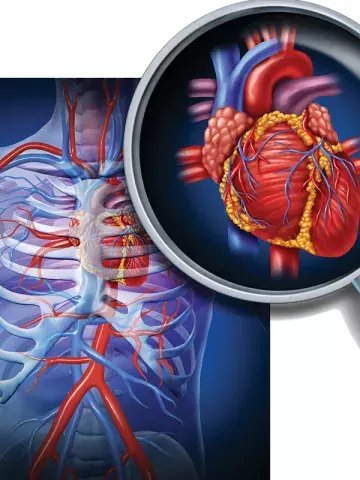Residual vascular inflammation after statin therapy as a predictor of CV events
By Rebecca Jenkins
Residual vascular inflammation levels after statin therapy better predict future cardiovascular (CV) events and death than residual cholesterol levels, an analysis finds.
Previous epidemiological studies in patients not receiving treatment had shown that inflammation and hyperlipidaemia made a similarly important contribution to future CV risk, researchers wrote in The Lancet.
To understand the relative importance of residual inflammatory risk compared with residual cholesterol risk after statin therapy, they conducted a collaborative analysis of 31,245 patients with, or at high risk of, atherosclerotic disease who were receiving statins and had participated in either the PROMINENT, REDUCE-IT or STRENGTH trials.
In all three trials and in the meta-analysis, residual high-sensitivity C-reactive protein (hsCRP) was a stronger predictor of incident major CV events, CV death and all-cause death than residual cholesterol risk.
Patients with higher levels of hsCRP (highest quartile vs lowest quartile) had a significantly increased risk of major adverse CV events (hazard ratio [HR], 1.31), CV mortality (HR, 2.68) and all-cause mortality (HR, 2.42).
By contrast, the relationship of residual cholesterol risk (as measured by LDL cholesterol) was neutral for major adverse CV events and of low magnitude for CV death (HR, 1.27) and all-cause death (HR, 1.16), researchers said.
‘These data have implications for the selection of adjunctive treatments beyond statin therapy and suggest that combined use of aggressive lipid- lowering and inflammation-inhibiting therapies might be needed to further reduce atherosclerotic risk,’ the researchers concluded.
Professor Leon Simons, Director of the Lipid Research Department at Sydney’s St Vincent’s Hospital and Associate Professor of Medicine at UNSW Sydney, welcomed the study but urged caution in interpreting the results given the differing patient characteristics in the studies.
‘In one study, 100% of subjects were diabetic, whereas 58% and 70% were diabetic in the other two studies’, he told Medicine Today.
‘The proportions receiving intensive statin therapy varied from 31% to 50% and 72%. While the findings might have been consistent from study to study, these major differences leave me wondering whether the overall findings are truly generalisable.’
Professor Simons said there has long been an interest in using anti-inflammatory agents for CVD prevention, but the picture remained mixed, with further research needed to clarify the role of adjunctive anti-inflammatory therapy and the ideal agents.
‘Studies with colchicine from Western Australia have been positive and yet the treatment has not caught on. In addition, administration of conventional anti-inflammatory drugs (e.g. NSAIDs, COX-2 inhibitors) has been shown to increase CVD risk,’ he said.


